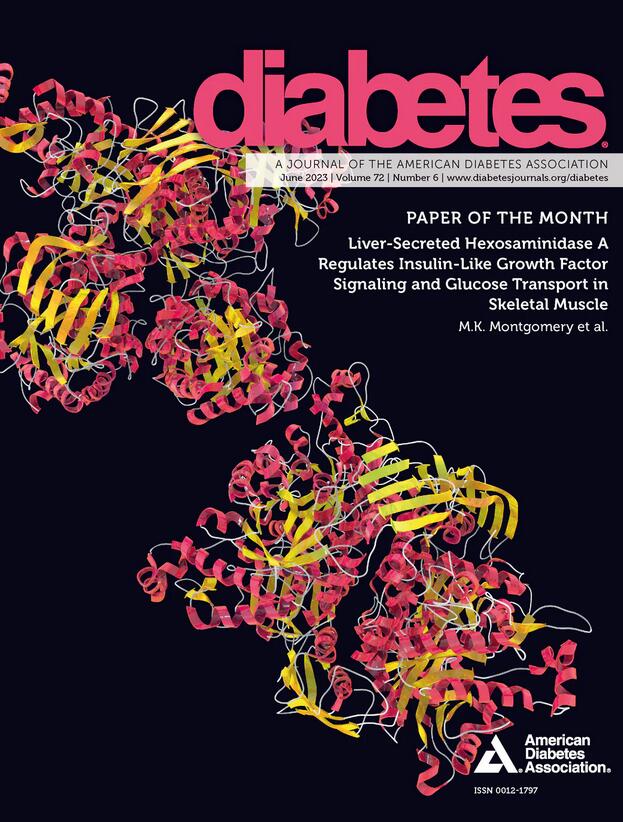Tracking insulin- and glucagon-expressing cells in vitro and in vivo using a double reporter human embryonic stem cell line
IF 6.2
1区 医学
Q1 ENDOCRINOLOGY & METABOLISM
引用次数: 0
Abstract
Human embryonic stem cell (hESC)-derived pancreatic alpha and beta cells can be used to develop cell replacement therapies to treat diabetes. However, recent published differentiation protocols yield varying amounts of alpha and beta cells amidst heterogeneous cell populations. To visualize and isolate hESC-derived alpha and beta cells, we generated a GLUCAGON-2AmScarlet and INSULIN-2A-EGFP dual fluorescent reporter (INSEGFPGCGmScarlet) hESC line using CRISPR/Cas9. We established robust expression of EGFP and mScarlet fluorescent proteins in insulin- and glucagon-expressing cells respectively without compromising the differentiation or function of these cells. We also showed the insulin- and glucagon-expressing bihormonal population at the maturing endocrine cell stage (Stage 6) of our pancreatic islet differentiation lose insulin expression over time, while maintaining an alpha-like expression profile, suggesting these bihormonal cells are cell autonomously fated to become alpha-like cells. We also demonstrated this cell line can be used to monitor hESC-derived insulin- and glucagonexpressing cells, and hESC-derived islet morphology in vivo by transplanting them into the anterior chamber of the eye in mice. Together, the INSEGFPGCGmScarlet hESC line provides an efficient strategy for tracking populations of hESC-derived beta- and alpha-like cells.利用双报告基因人类胚胎干细胞系跟踪体外和体内的胰岛素和胰高血糖素表达细胞
人类胚胎干细胞(hESC)衍生的胰腺α和β细胞可用于开发治疗糖尿病的细胞替代疗法。然而,最近公布的分化方案在异质细胞群中产生了不同数量的α和β细胞。为了可视化和分离 hESC 衍生的α和β细胞,我们利用 CRISPR/Cas9 生成了 GLUCAGON-2AmScarlet 和 INSULIN-2A-EGFP 双荧光报告基因(INSEGFPGCGmScarlet)hESC 株系。我们分别在表达胰岛素和胰高血糖素的细胞中建立了 EGFP 和 mScarlet 荧光蛋白的稳健表达,而不会影响这些细胞的分化或功能。我们还发现,在胰岛分化的成熟内分泌细胞阶段(第 6 阶段),表达胰岛素和胰高血糖素的双荷尔蒙细胞群会随着时间的推移失去胰岛素表达,同时保持α样表达谱,这表明这些双荷尔蒙细胞是细胞自主注定要成为α样细胞。我们还证明,通过将这种细胞系移植到小鼠的眼球前房,可用于监测 hESC 衍生的胰岛素和糖皮质激素表达细胞,以及 hESC 衍生的胰岛在体内的形态。总之,INSEGFPGCGmScarlet hESC品系为追踪hESC衍生的β和α样细胞群提供了一种有效的策略。
本文章由计算机程序翻译,如有差异,请以英文原文为准。
求助全文
约1分钟内获得全文
求助全文
来源期刊

Diabetes
医学-内分泌学与代谢
CiteScore
12.50
自引率
2.60%
发文量
1968
审稿时长
1 months
期刊介绍:
Diabetes is a scientific journal that publishes original research exploring the physiological and pathophysiological aspects of diabetes mellitus. We encourage submissions of manuscripts pertaining to laboratory, animal, or human research, covering a wide range of topics. Our primary focus is on investigative reports investigating various aspects such as the development and progression of diabetes, along with its associated complications. We also welcome studies delving into normal and pathological pancreatic islet function and intermediary metabolism, as well as exploring the mechanisms of drug and hormone action from a pharmacological perspective. Additionally, we encourage submissions that delve into the biochemical and molecular aspects of both normal and abnormal biological processes.
However, it is important to note that we do not publish studies relating to diabetes education or the application of accepted therapeutic and diagnostic approaches to patients with diabetes mellitus. Our aim is to provide a platform for research that contributes to advancing our understanding of the underlying mechanisms and processes of diabetes.
 求助内容:
求助内容: 应助结果提醒方式:
应助结果提醒方式:


